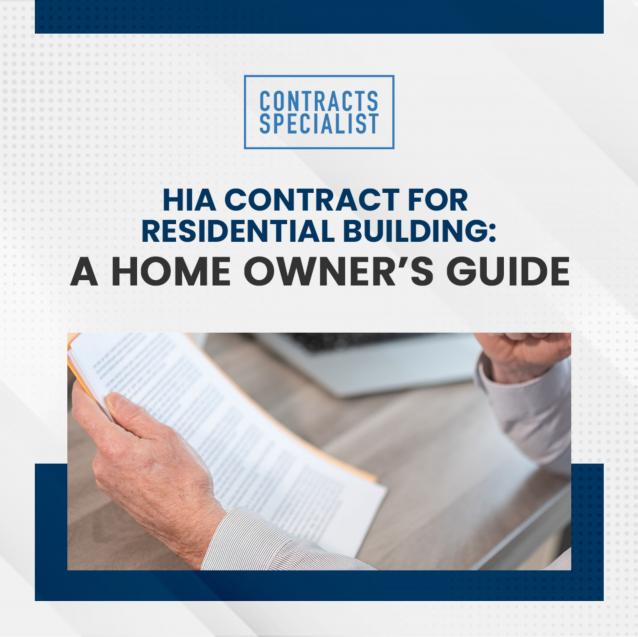
Enforcing a Payment Claim: A Guide for Contractors and Clients in the Australian Construction Industry
By Contracts Specialist|April 05, 2023
Payment claims are an essential part of the construction process in Australia's building and construction industry. Contractors issue payment claims to their clients to claim for the work they have completed on the building project. This document specifies all the work that has been done and how much each task costs.
Under the Building and Construction Industry Security of Payment Act 1999, every construction service should have an equivalent payment that builders and contractors rightfully deserve. Payment claims should not be belittled as these claims are the rights enforced by the builders. Moreover, the Act also enforces the rights of builders and contractors to file an adjudication, recover debts, and even suspend works in case of payment disputes.
A payment claim is a document issued by the claimant (the contractor) indicating that it is served under Section 13 of the Security of Payment Act. It contains a description and amount of the construction works completed, a reference date, and a due date for payment. For a payment claim to be valid, it must be served by the contractor, state that it is made under the Security of Payment Act, indicate the work done and the amount being claimed, and contain supporting statements (if applicable).
To enforce a payment claim, there are four steps in the payment claim process. First, the contractor and client agree on a reference date. Second, the contractor issues a payment claim on the said date. Third, the client must respond by paying the amount stated on the payment claim or by issuing a payment schedule. Lastly, if no amount was paid or if no payment schedule was issued, the contractor may apply for adjudication. It is the issuance of payment claims and payment schedules that makes the payment process quicker.
Under the Building and Construction Industry Security of Payment Act 1999, a reference date is the date when the claimant may issue progress claims on the respondent. This is agreed upon by both the contractor and the client and should be included in the contract. If there is no reference date stated in the contract, the last day of the month shall serve as the reference date.
A payment schedule is issued by the respondent stating the date and amount of payment he/she proposes to pay. The payment schedule shall contain the scheduled amount proposed by the contractor or the claimant, including its reasons for withholding payment (if applicable). The client or respondent must issue a payment schedule within the time required by the construction contract or within 10 business days.
If the respondent pays the claimant less than the amount being claimed, the respondent must indicate his/her reasons. In NSW's construction law, the claimant is allowed to apply for adjudication if the respondent did not seem to satisfy the claimed amount of the contractor. The claimant may apply for adjudication within 10 business days after receipt of the payment schedule.
Contractor clients must understand and keep in mind that construction work is a very tedious and expensive task. Payment claims indicate the work completed for the building project. Contractor’s clients (the respondents) will be able to review the progress of the work that has been done before deciding to issue a payment schedule. There is transparency with payment claims. With the breakdown of the amount that each construction work costs, the respondent is able to properly assess the claimed amount.
In conclusion, enforcing a payment claim is an essential part of the construction process. It ensures that contractors and builders are paid for their hard work. If you require legal assistance on payment claims, it's best to contact a building dispute lawyer who specializes in this area. At Contracts Specialist, we provide expert advice and guidance on enforcing payment claims and navigating the legal process to ensure that our clients get the best possible outcome.
Under the Building and Construction Industry Security of Payment Act 1999, every construction service should have an equivalent payment that builders and contractors rightfully deserve. Payment claims should not be belittled as these claims are the rights enforced by the builders. Moreover, the Act also enforces the rights of builders and contractors to file an adjudication, recover debts, and even suspend works in case of payment disputes.
A payment claim is a document issued by the claimant (the contractor) indicating that it is served under Section 13 of the Security of Payment Act. It contains a description and amount of the construction works completed, a reference date, and a due date for payment. For a payment claim to be valid, it must be served by the contractor, state that it is made under the Security of Payment Act, indicate the work done and the amount being claimed, and contain supporting statements (if applicable).
To enforce a payment claim, there are four steps in the payment claim process. First, the contractor and client agree on a reference date. Second, the contractor issues a payment claim on the said date. Third, the client must respond by paying the amount stated on the payment claim or by issuing a payment schedule. Lastly, if no amount was paid or if no payment schedule was issued, the contractor may apply for adjudication. It is the issuance of payment claims and payment schedules that makes the payment process quicker.
Under the Building and Construction Industry Security of Payment Act 1999, a reference date is the date when the claimant may issue progress claims on the respondent. This is agreed upon by both the contractor and the client and should be included in the contract. If there is no reference date stated in the contract, the last day of the month shall serve as the reference date.
A payment schedule is issued by the respondent stating the date and amount of payment he/she proposes to pay. The payment schedule shall contain the scheduled amount proposed by the contractor or the claimant, including its reasons for withholding payment (if applicable). The client or respondent must issue a payment schedule within the time required by the construction contract or within 10 business days.
If the respondent pays the claimant less than the amount being claimed, the respondent must indicate his/her reasons. In NSW's construction law, the claimant is allowed to apply for adjudication if the respondent did not seem to satisfy the claimed amount of the contractor. The claimant may apply for adjudication within 10 business days after receipt of the payment schedule.
Contractor clients must understand and keep in mind that construction work is a very tedious and expensive task. Payment claims indicate the work completed for the building project. Contractor’s clients (the respondents) will be able to review the progress of the work that has been done before deciding to issue a payment schedule. There is transparency with payment claims. With the breakdown of the amount that each construction work costs, the respondent is able to properly assess the claimed amount.
In conclusion, enforcing a payment claim is an essential part of the construction process. It ensures that contractors and builders are paid for their hard work. If you require legal assistance on payment claims, it's best to contact a building dispute lawyer who specializes in this area. At Contracts Specialist, we provide expert advice and guidance on enforcing payment claims and navigating the legal process to ensure that our clients get the best possible outcome.



